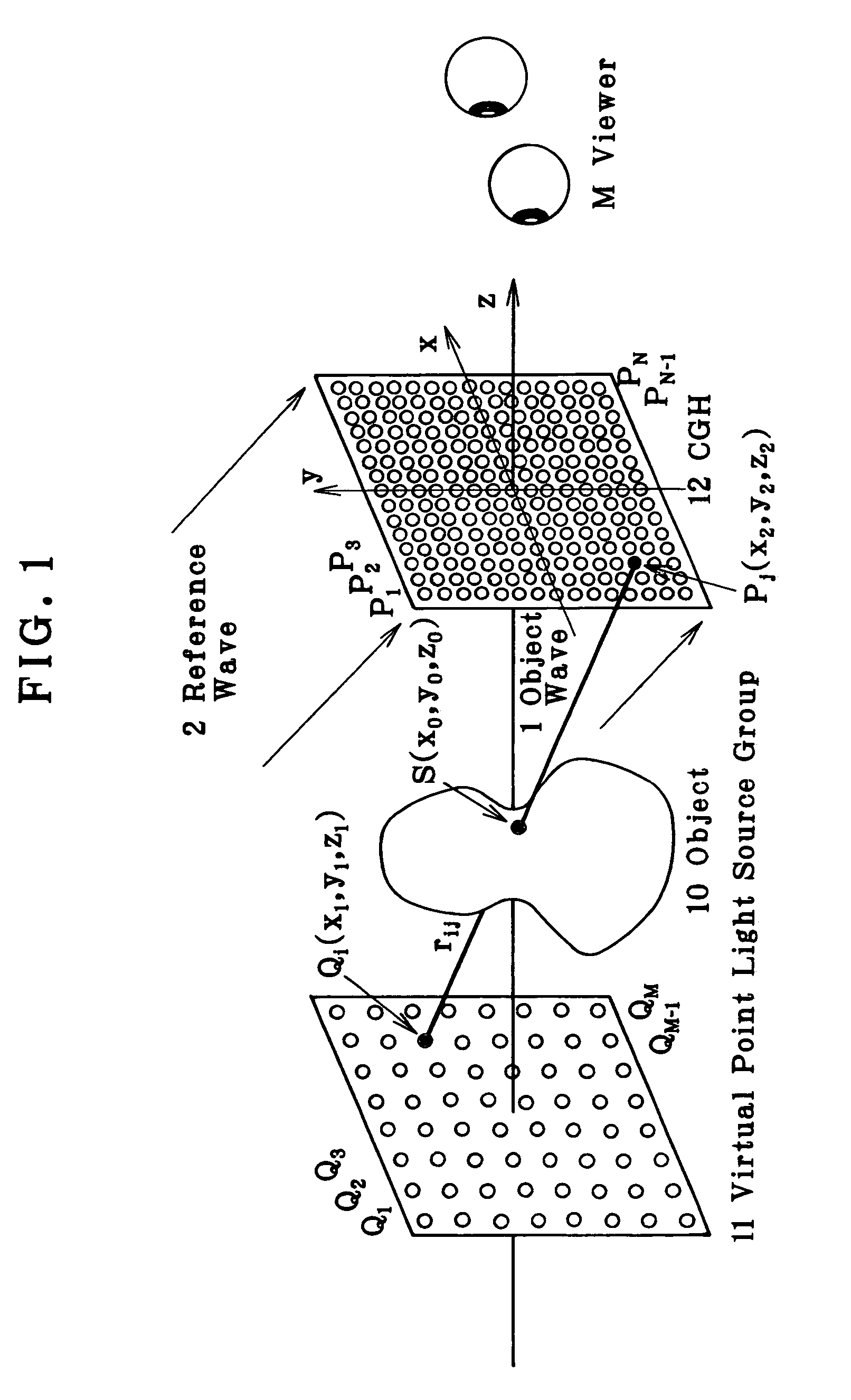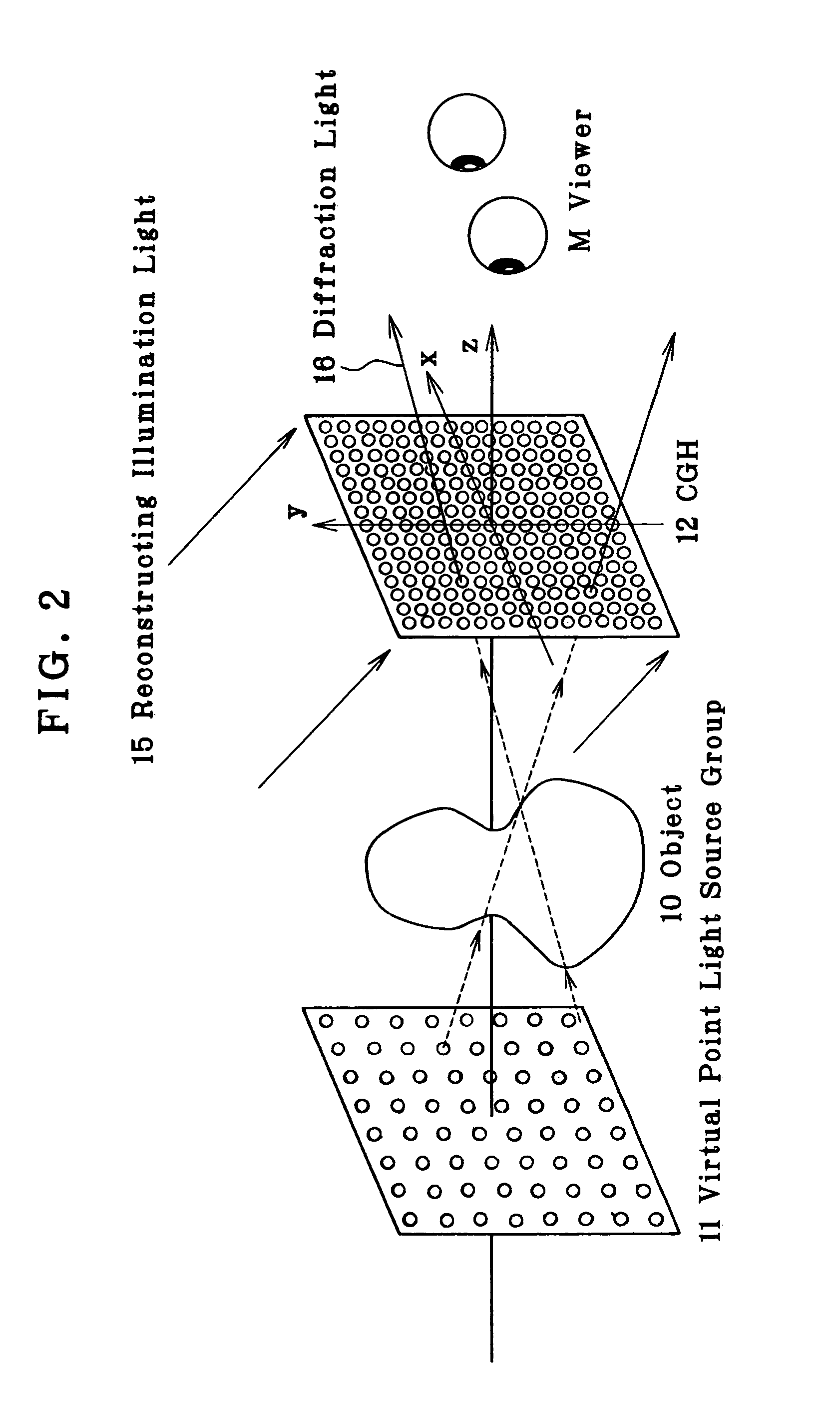Computer-generated hologram
a computer-generated, holographic technology, applied in the field of holograms, can solve the problems of distortion of images, difficult to record objects often in motion such as flexible objects and figures, and holograms such as they cannot be fabricated, so as to achieve the effect of easy image processing, more parallaxes, and high resolution
- Summary
- Abstract
- Description
- Claims
- Application Information
AI Technical Summary
Benefits of technology
Problems solved by technology
Method used
Image
Examples
Embodiment Construction
[0056]In accordance with the rudimental principles of the computer-generated hologram of the invention, used to deprive a pixel structure of a hologram plane, at a position spaced away from the hologram plane there are defined a multiplicity of virtual point light sources having a radiance that varies with a radiation direction and is equal to the radiance of an object surface in that direction or a multiplicity of virtual condensing points having a radiance that varies with a condensing direction and is equal to the radiance of an object surface in that direction, so that a computer-generated hologram is fabricated by using light that radiates from those virtual point light sources or condenses onto those virtual condensing points as virtual object light, thereby obtaining a computer-generated hologram (CGH) that has higher resolution and can dispense with any holographic photostep.
[0057]The principles of the computer-genreated hologram according to the invention are now explained....
PUM
 Login to View More
Login to View More Abstract
Description
Claims
Application Information
 Login to View More
Login to View More - R&D
- Intellectual Property
- Life Sciences
- Materials
- Tech Scout
- Unparalleled Data Quality
- Higher Quality Content
- 60% Fewer Hallucinations
Browse by: Latest US Patents, China's latest patents, Technical Efficacy Thesaurus, Application Domain, Technology Topic, Popular Technical Reports.
© 2025 PatSnap. All rights reserved.Legal|Privacy policy|Modern Slavery Act Transparency Statement|Sitemap|About US| Contact US: help@patsnap.com



